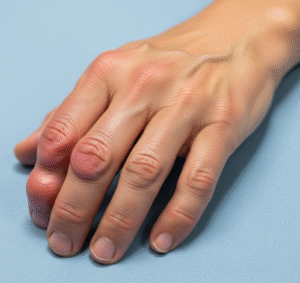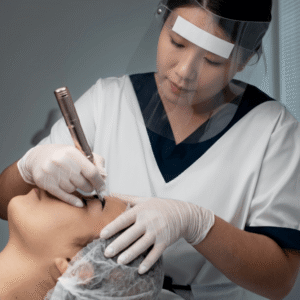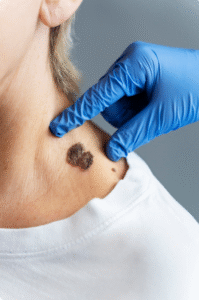Overview
Dermatitis herpetiformis (DH) is a chronic, intensely itchy skin condition linked to celiac disease, characterized by clusters of small blisters and red bumps. In Korea, it is considered rare but is increasingly recognized with improved diagnostic capabilities in dermatology and gastroenterology centers. Early diagnosis helps manage symptoms and prevent complications related to gluten sensitivity.
What is Dermatitis Herpetiformis?
Dermatitis herpetiformis is an autoimmune skin disorder caused by sensitivity to gluten. It presents as clusters of itchy blisters and bumps primarily on the elbows, knees, buttocks, and scalp. DH is associated with gluten-sensitive enteropathy, and patients may have intestinal abnormalities even if asymptomatic.
Symptoms
- Intensely itchy clusters of blisters and red bumps
- Symmetrical distribution, commonly on elbows, knees, buttocks, and scalp
- Burning or stinging sensation on affected areas
- Recurrent episodes triggered by gluten intake
- Possible gastrointestinal symptoms in coexisting celiac disease
Causes
- Gluten sensitivity – immune response to gliadin in wheat, barley, or rye
- Autoimmune reaction where antibodies deposit in the skin
- Genetic predisposition (HLA-DQ2 or HLA-DQ8 genes)
- Environmental factors may trigger onset in genetically susceptible individuals
Risk Factors
- Family history of celiac disease or autoimmune disorders
- Gluten consumption in susceptible individuals
- Other autoimmune conditions (thyroid disease, type 1 diabetes)
- Middle-aged adults are most commonly affected, though it can appear in younger people
Complications
- Chronic itching and skin infections due to scratching
- Malnutrition if associated celiac disease is untreated
- Vitamin and mineral deficiencies (iron, folate, calcium)
- Increased risk of intestinal lymphoma in untreated celiac disease
- Emotional and social impact due to visible skin lesions
Prevention
- Strict adherence to a gluten-free diet in susceptible individuals
- Early detection through skin and gastrointestinal screening
- Avoidance of triggers that exacerbate symptoms
- Regular follow-up with dermatologists and gastroenterologists
Treatment Options in Korea
- Diagnosis
- Skin biopsy with direct immunofluorescence to detect IgA deposits
- Blood tests for anti-tissue transglutaminase and anti-endomysial antibodies
- Assessment for celiac disease with endoscopy if needed
- Medical Treatments
- Gluten-free diet as the cornerstone of treatment
- Dapsone medication to control itching and blister formation
- Supplementation for nutrient deficiencies
- Topical therapies for symptomatic relief
- Rehabilitation & Support
- Education on dietary management and gluten avoidance
- Regular dermatology follow-up for skin lesions
- Nutritional counseling to prevent deficiencies













